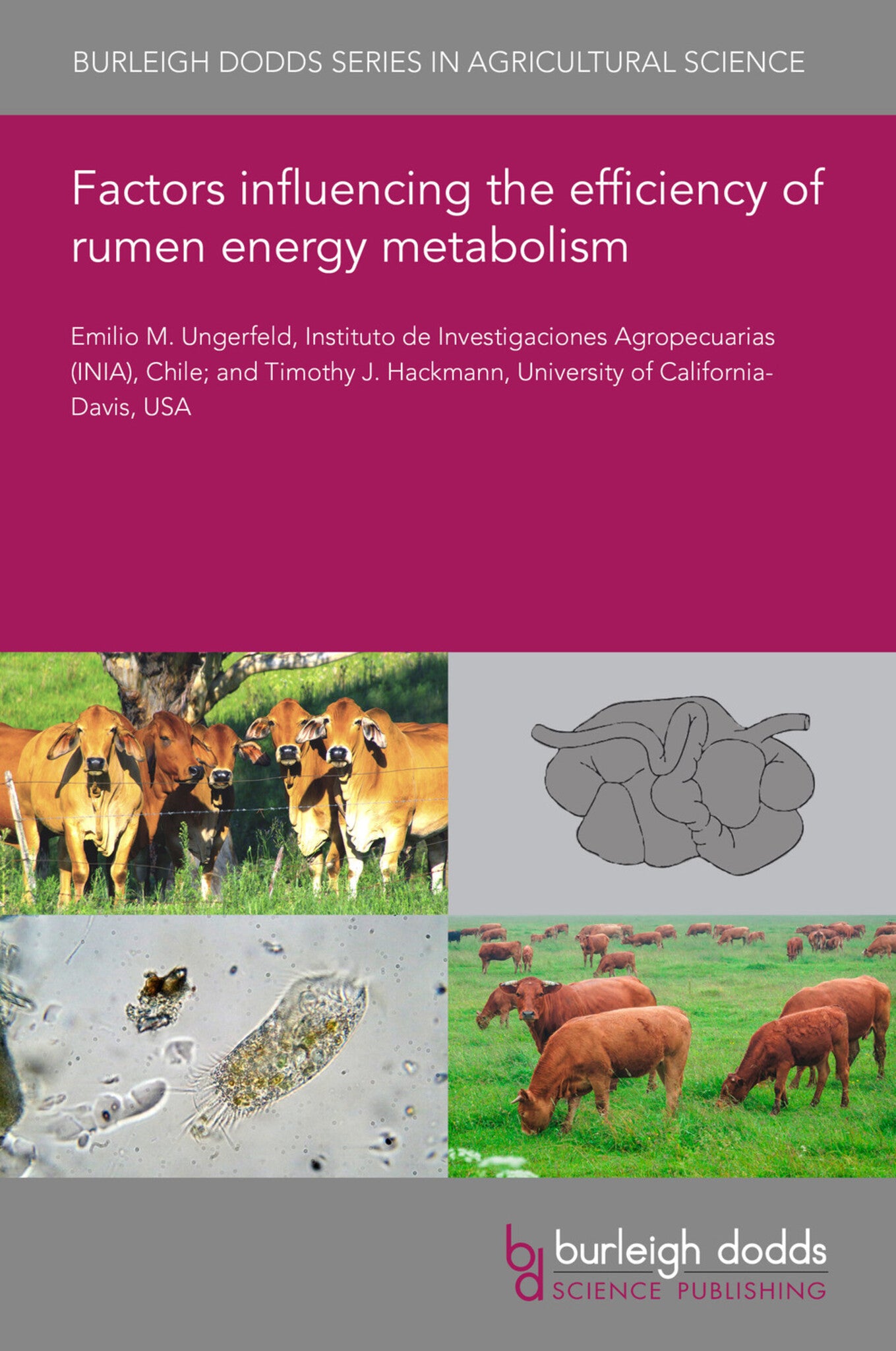We're sorry. An error has occurred
Please cancel or retry.
Factors influencing the efficiency of rumen energy metabolism
Regular price
£25.00
Sale price
£25.00
Regular price
£25.00
Unit price
/
per
Sale
Sold out
Re-stocking soon
The rumen microbial community transforms feed into nutrients that the ruminant host animal absorbs and utilises for maintenance, growth and fattening, reproduction and lactation. Volatile fatty aci...
Read More

Some error occured while loading the Quick View. Please close the Quick View and try reloading the page.
Couldn't load pickup availability
- Format:
-
08 June 2020

The rumen microbial community transforms feed into nutrients that the ruminant host animal absorbs and utilises for maintenance, growth and fattening, reproduction and lactation. Volatile fatty acids produced by microbial fermentation in the rumen are the main source of energy, glucose and fat for ruminants, and the ATP generated drives microbial growth, which provides amino acids to the host. Methane formed in the rumen is a greenhouse gas and an energy loss for ruminants. Whether inhibiting methanogenesis can benefit animal productivity depends on various factors that need to be better understood. The efficiency of microbial growth is affected by maintenance energy, cell composition including glycogen accumulation, energy spilling, and cell lysis. Research is needed on maximising the energy output of fermentation, controlling the profile of volatile fatty acids, and increasing the efficiency of microbial growth.

Price: £25.00
Publisher: Burleigh Dodds Science Publishing
Imprint: Burleigh Dodds Science Publishing
Series: Burleigh Dodds Series in Agricultural Science
Publication Date:
08 June 2020
ISBN: 9781786767110
Format: eBook
BISACs:
TECHNOLOGY & ENGINEERING / Agriculture / Animal Husbandry, Dairy farming, TECHNOLOGY & ENGINEERING / Agriculture / Sustainable Agriculture, Sustainable agriculture

1 Introduction 2 Main pathways of rumen fermentation 3 Methane 4 Factors influencing the efficiency of microbial growth 5 Interactions between rumen energy and nitrogen metabolism 6 Conclusion and future trends 7 Where to look for further information 8 References



